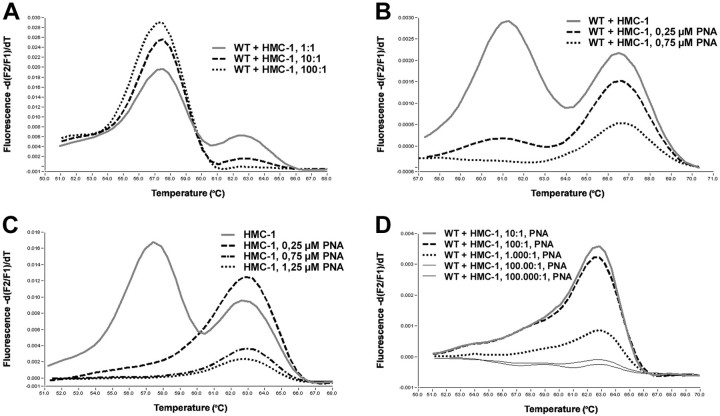Figure 3.
Effects of PNA-mediated PCR clamping. In melting curve analyses with Light Cycler hybridization probes wild-type (wt) c-kit and codon 17 mutation Asp816→Val (mut) can be discriminated through different melting peaks at ∼57°C (wt) and 63°C (mut) (A, continuous line). With only the use of hybridization probes, the method allows detection of the heterozygous mutation in an 10:1 excess of normal versus HMC-1 cells (A, broken line). Effects of PNA-mediated PCR clamping of the wild-type allele is demonstrated with various amounts of input PNA. In 100 ng of HMC-1 DNA, 0.75 μmol/L of PNA completely suppresses amplification of the wild-type allele (B, dotted line). Reduction of amplification efficiency of also the mutated allele by increasing amounts of PNA as a side effect must be taken into consideration when assessing the appropriate amount of input PNA (C). Compared to results in A, PNA-mediated PCR clamping of the wild-type allele results in a 100-fold increase of sensitivity yet allowing detection of the mutated allele in a 1000-fold excess of wild-type background DNA (D, three upper curves).

